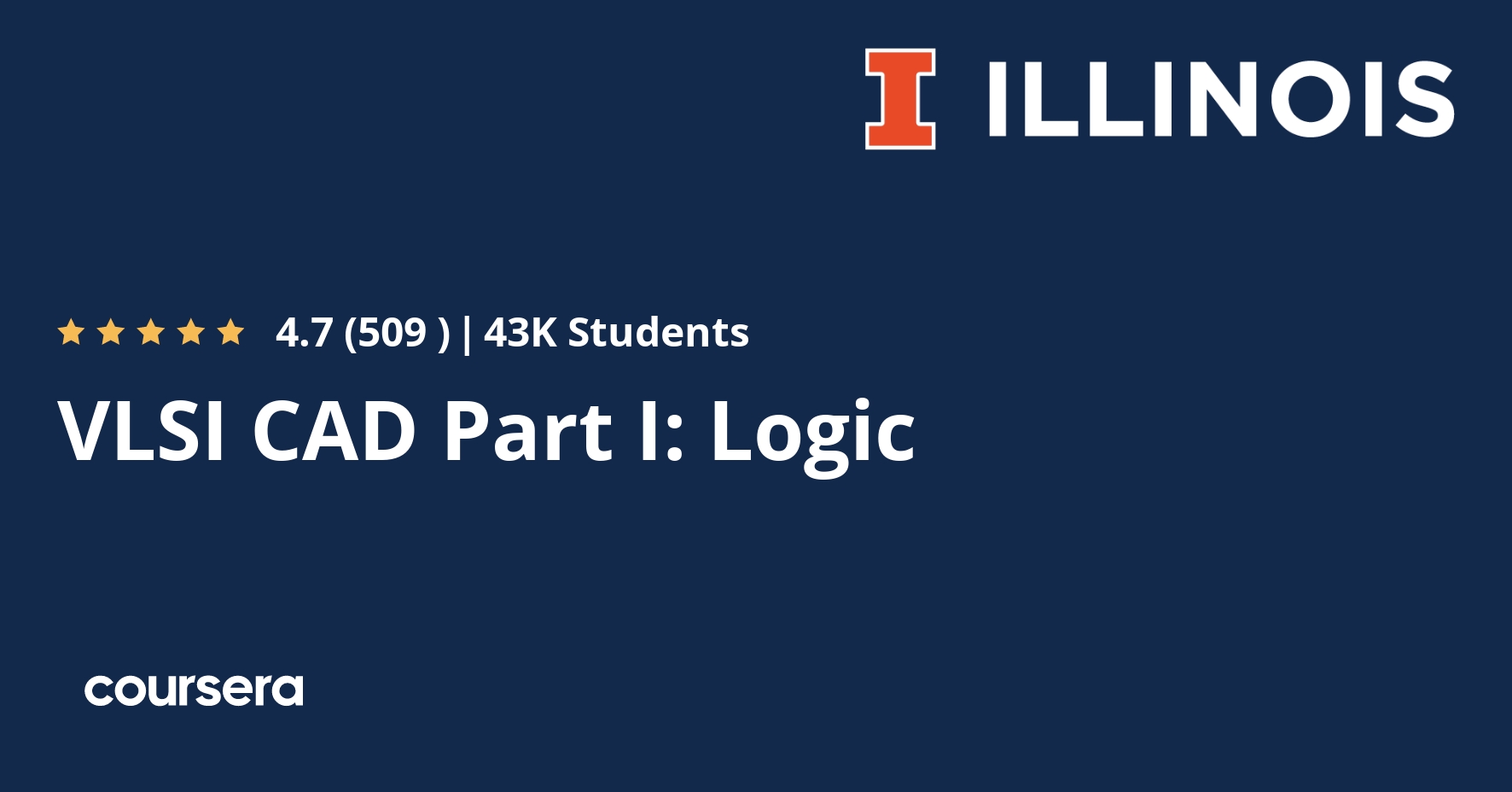Description
A modern VLSI chip has a zillion parts — logic, control, memory, interconnect, etc. How do we design these complex chips? Answer: CAD software tools. Learn how to build thesA modern VLSI chip is a remarkably complex beast: billions of transistors, millions of logic gates deployed for computation and control, big blocks of memory, embedded blocks of pre-designed functions designed by third parties (called “intellectual property” or IP blocks). How do people manage to design these complicated chips? Answer: a sequence of computer aided design (CAD) tools takes an abstract description of the chip, and refines it step-wise to a final design. This class focuses on the major design tools used in the creation of an Application Specific Integrated Circuit (ASIC) or System on Chip (SoC) design. Our focus in this first part of the course is on key Boolean logic representations that make it possible to synthesize, and to verify, the gate-level logic in these designs. This is the first step of the design chain, as we move from logic to layout. Our goal is for students to understand how the tools themselves work, at the level of their fundamental algorithms and data structures. Topics covered will include: Computational Boolean algebra, logic verification, and logic synthesis (2-level and multi-level).
Recommended Background
Programming experience (C, C++, Java, Python, etc.) and basic knowledge of data structures and algorithms (especially recursive algorithms). An understanding of basic digital design: Boolean algebra, Kmaps, gates and flip flops, finite state machine design. Linear algebra and calculus at the level of a junior or senior in engineering. Exposure to basic VLSI at an undergraduate level is nice — but it’s not necessary. We will keep the course self-contained, but students with some VLSI will be able to skip some background material.e tools in this class.
What you will learn
Orientation
In this module you will become familiar with the course and our learning environment. The orientation will also help you obtain the technical skills required for the course.
Computational Boolean Algebra
In this module, we will introduce advanced Boolean algebra math concepts that make it possible to take a “computational” approach to Boolean algebra.
Boolean Representation via BDDs and SAT
Week 2 introduces two powerful and important representation techniques that allow us to do SERIOUS computational Boolean algebra, on industrial-scale designs.
2-Level Logic Synthesis, and Multi-Level Logic Synthesis via the Algebraic Model
In Week 3, we will move from “representing” things to “synthesizing” things. In this case, synthesis means “optimization”, or maybe the word “minimization” is more familiar from hand work with Kmaps or Boolean algebra.
Multilevel Factor Extract and Don’t Cares
You now know that to factor a multi-level network to reduce its complexity, you must look at the kernels and co-kernels. You know how to “get” these for any node. But — what do you do with a big network to actually FIND the right common divisors? This is called EXTRACTION. We then look at a new opportunity to optimize multi-level logic: Don’t Cares. In simple designs, we usually regard Don’t Cares as “impossible inputs” — things that just do not happen, so we can choose the value the hardware creates to minimize the logic.






